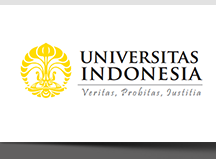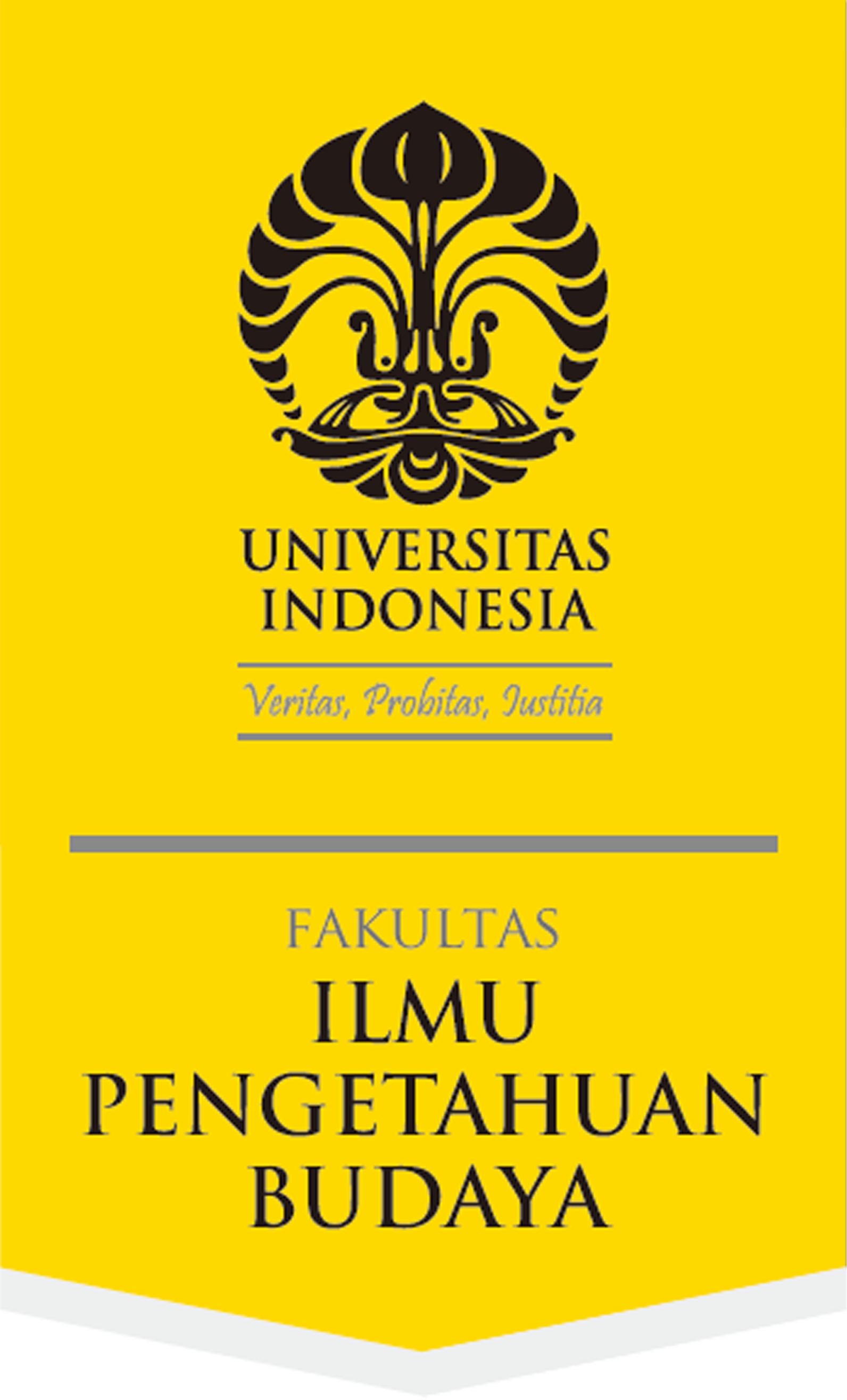Abstract
The Sundanese are deeply immersed in Islam, as exemplified by the adage, “to be Sunda is to be Muslim”. An important initiative within this cultural-religious context is the translation of the Quran into low vernacular Sundanese, departing from the formal and codified language forms of the original. Despite concerns about potential textual transgression, this translation negotiates linguistic barriers and reinforces cultural identity within the Islamic framework. This paper examines the contemporary Sundanese translation of the Quran, Ayat Suci Lenyepaneun (1989), and argues that its use of low colloquial Sundanese not only enhances the Quran’s legibility but also establishes an immediate connection between readers and their faith.
References
Anderson, Edmund A. 1993. “Speech levels: the case of Sundanese pragmatics”, Pragmatics: quarterly publication of the International Pragmatics Association 3/2 (June): 107-136.
Bamualim, Chaider. 2015. Negotiating Islamisation and resistance; A study of religions, politics, and social change in West Java from the early 20th century to the present. PhD thesis, Leiden University.
Bruinessen, Martin van. 1994. “Pesantren and kitab kuning: maintenance and continuation of a tradition of religious learning”, in: Wolfgang Marschall (ed.), Text from the islands; Oral and written traditions of Indonesia and the Malay world [Ethnologica Bernica, 4], pp. 121-145. Berne: University of Berne.
Burhanuddin, Mamat S. 2020. Hermeneutika Al-Quran. Yogyakarta: Pustaka Pelajar.
Coolsma. S. 1904. Soendaneesche spraakkunst. Leiden: Sijthoff.
Dahuri, Rokhimin. 2004. Budaya bahari: sebuah apresiasi di Cirebon. Jakarta: Perum Percetakan Negara RI.
Darmawan, Dadang. 2009. Ortodoksi tafsir; Respon ulama terhadap Tafsir Tamsjijjatoel Moeslimin karya K.H. Ahmad Sanoesi. PhD thesis, Universitas Islam Negeri Syarif Hidayatullah.
Ekadjati, Edi. S. 1975. “Penyebaran agama Islam di Jawa Barat”, in: Teguh Asmar, Sejarah Jawa Barat: dari masa pra-sejarah hingga masa penyebaran Islam, pp. 82-107. Bandung: Proyek Penunjang Peningkatan Kebudayaan Nasional Provinsi Jawa Barat.
Ekadjati. Edi. S. 2005. Sunan Guning Jati: penyebar dan penegak Islam di Tatar Sunda. Jakarta: Pustaka Jaya.
Faizin, Hamam. 2022. Sejarah penerjemahan Al-Qur’an di Indonesia. Jakarta: Gaung Persada
Farida, Ummu. 2015. “Islam pribumi dan Islam puritan; Ikhtiar menemukan wajah Islam Indonesia berdasar proses dialektika pemeluknya dengan tradisi lokal”, FIKRAH: Jurnal Ilmu Akidah dan Studi Keagaman 3/1 (June): 141-156.
Geertz, Clifford. 1965. “Modernization in a Muslim society: the Indonesian case”, in: Robert N. Bellah, Religion and progress in Modern Asia, pp. 93-108. New York, NY: The Free Press.
Hageman J.C.z., Johannes. 1867. “Geschiedenis der Soendalanden”, Tijdschrift voor Indische Taal-, Land- en Volkenkunde. Batavia: Bataviaasch Genootschap van Kunsten en Wetenschappen.
HAMKA. 1965. Tafsir al-Azhar. Djakarta: Pembimbing Masa.
Hardjasaputra, Sobana. 2015. Islam di Tatar Sunda dan hubungan bupati dengan ulama zaman Hindia Belanda. Bandung: MSI Komisariat UIN Sunan Gunung Djati.
Hasim, Mohammad E. 1989. Ayat Suci Lenyepaneun. Bandung: Pustaka. [30 vols.]
Hasim, Mohammad E. 1996a. “Pangalaman nyusun naskah Ayat Suci Lenyepaneun”, in: Perhimpuan KB-PII, ngamule budaya Sunda nanjeurkeun komara agama, lokakarya da’wah Islam napak kana budaya Sunda, pp. 87-89. Bandung: Perhimpunan KB-PII.
Hasim, Mohammad E. 1996b. Rupa-rupa upacara Sunda jaman ayeuna. Bandung: Pustaka Setia.
House, Juliane. 1981. A model for translation quality assessment. Tubingen: Gunter Narr Verlag.
Kartini, Raden Adjeng. 1912. Door duisternis tot licht: gedachten over en voor het Javaansche volk. ’s-Gravenhage: D.C.T. van Drop & Co.
Lubis, Nina H. 2011. Sejarah perkembangan Islam di Jawa Barat. Bandung: Yayasan Masyarakat Sejarawan Indonesia Cabang Jawa Barat; Pemerintah Provinsi Jawa Barat.
Meyer, Verena. 2022. “More than diacritics; Writing, power, and the porosity of script and language in Java”, Journal of Southeast Asian Studies 53/1-2 (March-June): 356-358.
Moriyama, Mikihiro. 2000. “Moehamad Moesa, print literacy, and the new formation of knowledge in nineteenth-century West Java”, Indonesia and the Malay World 28(80): 5-21.
Muhsin, Mumuh. 2010. Penyebaran Islam di Jawa Barat. Jatinangor: Fakultas Sastra Universitas Padjadjaran.
Neubert, Albrecht and Gregory M. Shreve. 1992. Translation as text. Kent, OH: Kent State UP.
Nida, Eugene A. 1964. Toward a science of translating: with special reference to principles and procedures involved in Bible translating. Leiden: E.J. Brill.
Nurdin, Ahmad Ali and Jajang A. Rohmana. 2019. “Ayat Suci Lenyepaneun and social critiques; Moh. E. Hasim’s critiques of the political policy of the New Order”, Journal of Indonesian Islam 13/1 (June): 141-176.
Permana, Irfan Setia et al. 2021. “Moderasi Islam pada tafsir Sunda Ayat Suci Lenyepaneun karya Mohammad Emon Hasim”, Al-Tarbawi Al-Haditsah: Jurnal Pendidikan Islam 6(1): 58-88.
Pickthall, Mohammed Marmaduke. 1938. The meaning of the glorious Quran. Hyderabad-Deccan: Government Central Press.
Riddell, Peter G. 1984. “The sources of Abd Al-Rauf’s Tarjumin Al-Mustafid”, Journal of the Malaysian Branch of the Royal Asiatic Society 57(2): 113-118.
Riddell, Peter G. 2014. “Translating the Qur′ān into Indonesian languages”, Al-Bayān – Journal of Qur′an and Ḥadīth Studies 12 (1): 1-27.
Rohmana, Jajang A. 2013. “Perkembangan kajian Al-Qur’an di Tatar Sunda: sebuah penelusuran awal”, Jurnal Suhuf 6(1): 197-224.
Rohmana, Jajang. A. 2017a. “Sundanese translations of the Quran in West Java; Characteristics and the limits of translation”, DINIKA Academic Journal of Islamic Studies 2/2 (May-August): 169-170.
Rohmana, Jajang A. 2017b. Sejarah tafsir Al-Qur’an di Tatar Sunda. Bandung: Mujahid Press.
Rohmana, Jajang A. 2020. “Tafsir Al-Qur’an dari dan untuk orang Sunda: Ayat Suci Lenyepaneun Karya Moh. E. Hasim (1916-2009)”, Journal of Qur’an and Hadith Studies 9/1 (January-June): 1-24.
Rohmana, Jajang A. 2021. Allah sebagai Aing: Superioritas Tuhan dalam tafsir Al-Qur’an berbahasa Sunda. Bandung: Ushuluddin.
Rohmana, Jajang, A. 2022. “Patronase politik dalam terjemahan resmi Al-Qur’an Indonesia”, in: Hamam Faizin, Sejarah penerjemahan Al-Qur’an di Indonesia, pp. xxix-xxxiv. Jakarta: Gaung Persada.
Rosidi, Ajip. 1980. “Ciri-ciri manusia dan kebudayaan Sunda”, in: Edi S. Ekadjati (ed.), Masyarakat Sunda dan kebudayaannya, pp. 95-122. Jakarta: Girimukti Pasaka.
Rosidi, Ajip. 1996. Pancakaki. Bandung: Girimukti Pasaka.
Rosidi, Ajip et al. 2000. Ensiklopedi Sunda; Alam, budaya, dan manusia, termasuk budaya Cirebon dan Betawi. Jakarta: Pustaka Jaya.
Ruthven, Malise. 2006. Islām in the World. Oxford: Oxford University Press.
Saepudin, Dindin Moh. 2023. Vernakularisasi Tafsir Al-Qur’an di Indonesia Abad ke-20: studi kasus Tafsir berbahasa Sunda. PhD thesis, Universitas Islam Negeri Syarif Hidayatullah.
Sanusi, Ahmad. 1912. Raudat al-Irfan fi Ma‘rifat al-Quran. Sukabumi: Pesantren Gunung Puyuh.
Satjadibrata, R. 1956. Undak Usuk Basa Sunda. Jakarta: Dinas Penerbitan Balai Pustaka.
Snouck Hurgronje, Christiaan. 1913. De Islam in Nederlandsch-Indië, 1857-1936. Baarn: Hollandia-drukkerij.
Snouck Hurgronje, Christiaan. 1931. Mekka in the latter part of the 19th century. Leiden: Brill.
Suganda, Her. 2004. “Moh E. Hasim, berkarya sampai tua”, Kompas, 13 July.
Vinay, Jean-Paul and Jean Darbelnet. 1995. Comparative stylistics of French and English as a methodology of translation. Philadelphia, PA: J. Benjamins.
Zadeh, Travis. 2012. The vernacular Qur′ān, translation and the rise of Persian exegesis. London: Oxford University Press.
Zimmer, Benjamin G. 2000. “Al-Άrabiyyah and Basa Sunda; Ideologies of translation and interpretation among the Muslims of West Java”, Studia Islamika 7(3): 31-65.
Recommended Citation
Hanafi, Taufiq
(2025)
"Contemporary Sundanese Quran; A departure or divine proximity?,"
Wacana, Journal of the Humanities of Indonesia: Vol. 26:
No.
2, Article 3.
DOI: 10.17510/wacana.v26i2.1758
Available at:
https://scholarhub.ui.ac.id/wacana/vol26/iss2/3
Figure 1. Excerpt from the Ayat Suci Lenyepaneun which includes a complete translation of verse 2 from Surah Al-Baqarah, alongside Hasim’s own transliteration and extended commentary
Figure 2 - Ayat Suci Lenyepaneun.jpg (72 kB)
Figure 2. The complete verse of Al Baqarah verse 2 with Hasim’s transliteration ‘dzaalikal-kitaabu laa raiba fiihi hudallil-muttaqin’
Figure 3 - Ayat Suci Lenyepaneun.jpg (65 kB)
Figure 3. Excerpt from Ayat Suci Lenyepaneun indicating the use low-register pronoun.
Figure 4 - Ayat Suci Lenyepaneun.jpg (58 kB)
Figure 4. Surah Taha verse 12 with Hasim’s transliteration that reads: ‘Inni ana rabbuka fakhla’ na’lalik. Innaka bilwaadil-muqaddasi thuwa’
Figure 5 - Ayat Suci Lenyepaneun.jpg (105 kB)
Figure 5. Hasim’s verse-by-verse Sundanese translation, immediately followed by the word-for-word interlinear translation. It can be seen that Hasim uses two types of pronoun in Sundanese that belong to low and high register
Figure 6 - Ayat Suci Lenyepaneun.jpg (61 kB)
Figure 6. Hasim’s transliteration and interlinear verse-by-verse translation of Surah Taha verse 13. This translation shows Hasim’s flexibility in utilizing high register pronoun, and thus inconsistency in his Quran translation.
Figure 7 - Ayat Suci Lenyepaneun.jpg (52 kB)
Figure 7. This verse encapsulates the translation endeavour in Ayat Suci Lenyepaneun. Hasim’s transliteration reads: Wa nahnu aqrabu ilaihi min hablil-warid









